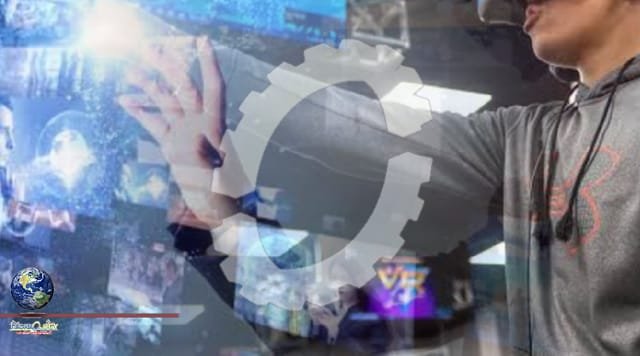Immersive technology that puts students inside the cockpit of a fighter plane, on the ocean floor or lets them Virginia virtually dissect animals is now available at two city schools.

Dubbed virtual reality, the technology has morphed from entertainment applications to education, reaching a generation of teens who grew up playing computer games.
On March 23, Virginia High School held an open house for teachers and students to visit its new virtual reality lab. Inside are 12 VR headsets, controllers and computers to take students virtually anywhere. A similar lab is now set up at Virginia Middle School and believed to be among the largest in the region, according to Logan Childress, emerging technology specialist.
“The purpose is to give a futuristic look into educational technology. To give teachers and classes something they can use to help further education in the classroom, supplement what they’re doing and try to mitigate some of the learning loss from the past couple of years (due to COVID),” Childress said.
The equipment was paid for with federal Elementary and Secondary School Emergency Relief funds, allocated to address learning loss incurred during the past two years due to disruptions by the pandemic.
“It’s interactive. I call it the ‘gamification’ of learning because this is a medium students understand. If they can learn through this or even as a supplemental — it’s more native to them, engaging and visual all at the same time,” Childress said.
Some of the applications are basic, designed to introduce users to the technology, while others are much more in-depth and highly interactive.
“We had an environmental science class come down. It’s much more than turning a page or watching a video. You have these things in your hand so you can interact,” Principal Ronnie Collins said. “As a history teacher, I can tell you about blitzkrieg all day or show you a video, but this is so much more.”
“Whether it’s CTE (career and technical education) with automotive or history or biology, there can be an application no matter what the curriculum. It’s just another tool,” Collins said. “When I was in the classroom students would watch a filmstrip, then video and streaming. Now to be immersed in whatever is just the next step.”
There is a World War II airplane mission over Berlin, space applications, including the Apollo 11 mission, a journey inside the components of the human body, a car mechanic performing virtual repairs, and looking inside how famous artwork was created and sports like bowling and boxing, Childress said, adding they have about 90 applications thus far.
“Their calling card is it is so realistic,” Childress said. “I have one basic program called Air Car. It’s an entire futuristic city; you fly around in this futuristic air car. It helps users learn the controls, but you can roll the thing like a plane; nose down, nose up. It’s raining the whole time, so you see these drops of water on the windshield.
“A lot of things we have were actually created as games but also became a learning tool. Now it’s starting to diverge and companies are developing VR for education,” Childress said.
The room is set up to accommodate 24 students in a class and 12 can be interacting with virtual reality at any given time. Each person has a partner whose job is watch and see what they’re doing and make sure if they’re moving they don’t walk into anyone or anything, Childress said.
source:This news is originally published by journal
